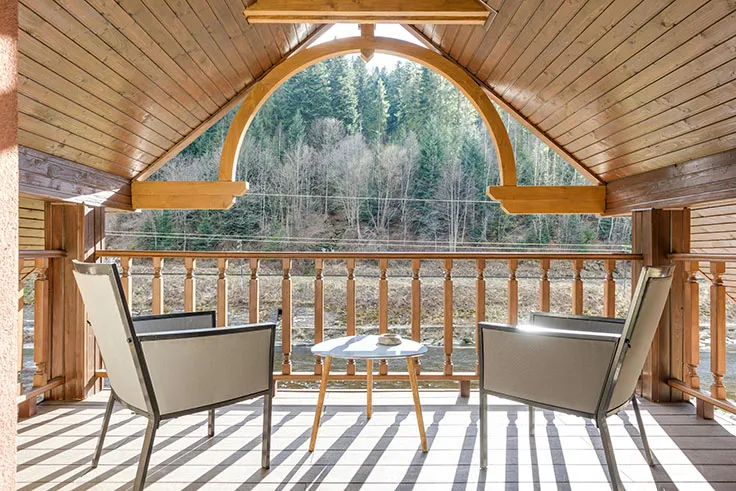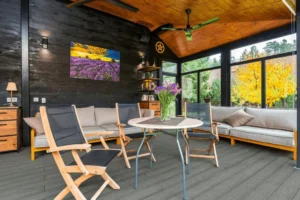Essential Guide to Deck Railing Height
Deck railing is a safety and aesthetic feature around a deck, consisting of posts, rails, and infill. It prevents falls, offers support, and enhances the deck’s appearance, and can be made from various materials. Therefore, many homeowners install deck railings around stair decks and porch decks for beauty and safety. However, installing deck railings is not random; it must comply with local building guidelines, such as deck railing code requirements. In this article, we will discuss the deck railing height code and how to choose deck railings.
Height and Space Requirements
a. Height Requirements
Most locations require residential deck railing height to be at least 36 inches tall if the deck is 30 inches or more above the ground. However, variations exist. In California and Washington, the minimum deck railing height for residential use is 42 inches. For commercial buildings and multi-family houses, the deck railing height need to be at least 42 inches.
b. Baluster and Infill Spacing
Apart from deck railing height code, the gap between railings and infill spacing also has requirements. The maximum gap between railings is 4 inches to prevent balls from passing through or falling down. There is an exception: the gap can extend to 6 inches for stair railing.
c. Railing Post Spacing
For deck railing post spacing, the posts must be within 8 inches to meet strength requirements. If you are searching for railing posts with great strength, you can check the guidelines from IRC and IBC first. These guidelines state load capacities for handrails, infills and guardrails. They will be helpful for your selection.

Choosing Deck Railing Options
1. Types of Deck Railing Materials
When choosing deck railing materials, you need to identify your needs and expectations first, and also consider future maintenance and longevity.
Here is a list of the common deck railing materials on the market:
| Material | Pros | Cons |
| Wood | Natural beauty and versatility; can be painted or stained. | Requires regular maintenance, including staining, painting, and sealing. |
| Metal | Durable and low-maintenance; ideal for various climates. | Require regular maintenance to prevent rust. |
| Vinyl | Low maintenance and affordability; esistant to rot, insects, and weather damage. | Not offer the same aesthetic appeal as wood or metal; become brittle in extremely cold temperatures. |
| Composite | Offer the look of wood without the high maintenance requirements.; resistant to rot, insects, and UV damage. | The upfront cost will be high. |
| Glass | Provide a modern, sleek look and allow for unobstructed views. | Requires regular cleaning to maintain its clarity; cost will be high. |
2. Maintenance and Longevity
All deck railing materials on the market today require maintenance, including cleaning and necessary repairs. However, you can choose materials that require low maintenance. Wood railing need more effort since wood is prone to decay and insect damage, while materials likes composite (WPC, BPC) , steel, vinyl require low maintenance due to their composition.
For longevity, wood railing needs to be replaced or repaired more frequently than materials like steel and composite, as wood is susceptible to weather and temperature fluctuations.
Conclusion
Adhering to deck railing height code, which prioritize safety through the installation of at least 36 inches high guardrails, is paramount for outdoor structure. Local building codes serve as crucial guidelines to ensure compliance and safety standards are met, emphasizing the importance of consulting them for precise design specifications.
For those navigating the complexities of deck railing options, seeking resources and professional consultation is strongly advised. This approach not only provides detailed guidance but also considers factors such as budget constraints, aesthetic expectations, and the unique environmental conditions of the area. By integrating these considerations, homeowners can confidently create a secure and visually appealing outdoor space that enhances both safety and enjoyment.
Trending Reading
What Are the Differences Between the WPC Board and PVC Board?
[2024 Update] How Long Does WPC Decking Last?











